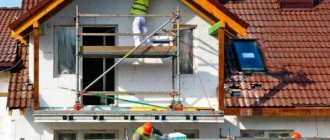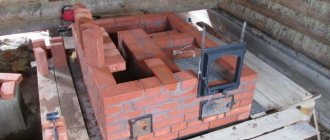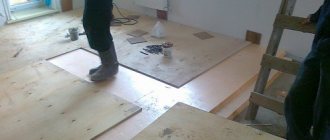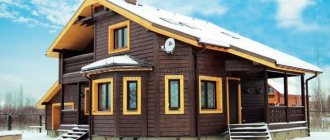The unique thermal insulation properties of polyurethane foams (PPU) have been known and in demand in construction, mechanical engineering and many other areas of human activity for more than 70 years. However, foundation insulation with polyurethane foam has become widespread only in recent years due to the development of jet application (spraying) technology. It is necessary to immediately make a reservation that we are talking about hard types of frozen foam. Depending on the rate of polymerization and the ratio of the base components (polyols and isocyanurates), the result of the reaction is an elastic (foam rubber) or rigid structural material. The application of the latter will be discussed in this article.
Comparison of polyurethane foam with other heat insulators
In terms of thermal conductivity (0.021 - 0.029 W/(m K)), polyurethane foam is second only to aerogels. But the scope of aerogels is still limited primarily to exotic, highly scientific high-tech. The performance of the closest real competitor - extruded polystyrene foam (EPS) - is on average 20% worse (Kt = 0.029 - 0.032 W/(m K)).
As for other physical properties of polyurethane foam that are important in construction practice:
- Compressive strength is up to 120 - 150 kPa. Corresponds to brands of medium-density foam, inferior to EPS.
- Moisture permeability - no more than 1%. Polyurethane foam accumulates more moisture than EPS, but significantly less than other building thermal insulators.
- Chemical inertness. Resistant to all types of organic solvents, as well as acids and alkalis of low and medium concentrations.
- Degree of adhesion with the insulated base. Exceptionally high adhesion to the surface due to the spraying features. What is especially important is that it does not depend on the shape, degree of roughness and type of surface material.
- Fire danger level. From G1 to G4 depending on the addition of fire retardants. However, fire-fighting additives reduce the energy efficiency and service life of polyurethane foam insulation.
- Price. The price of spraying a 50 mm thick polyurethane foam coating in regional centers of the Russian Federation is $10.5 - $13.5 per 1 sq. m. m. depending on the density of polyurethane foam (we are talking about a closed-cell material). This is significantly more expensive than the cost of EPS boards (about 3 times) and polystyrene foam. However, it is necessary to compare the economic efficiency of work taking into account the cost of all related operations.
- Requires protection from UV radiation. It is not recommended to stand in the sun without shelter for more than 3 - 4 days.
Useful video
The unique thermal insulation properties of polyurethane foams (PPU) have been known and in demand in construction, mechanical engineering and many other areas of human activity for more than 70 years. However, foundation insulation with polyurethane foam has become widespread only in recent years due to the development of jet application (spraying) technology. It is necessary to immediately make a reservation that we are talking about hard types of frozen foam. Depending on the rate of polymerization and the ratio of the base components (polyols and isocyanurates), the result of the reaction is an elastic (foam rubber) or rigid structural material. The application of the latter will be discussed in this article.
In what cases is it preferable to insulate the foundation with polyurethane foam?
From the point of view of energy efficiency, polyurethane foams are superior to polystyrenes, however, the lower price of the latter makes it possible to compensate for the properties of the layer by increasing its thickness. On the other hand, there are certain technological factors that make it advisable to use polyurethane foam.
Foundation insulated with polyurethane foam
Difficult foundation terrain
One of the disadvantages of thermal insulation of the foundation using slab materials is the formation of voids between the insulation and the mounting surface. There is a high probability of moisture getting into these cavities and the formation of unaccounted for cold bridges. In addition, significant differences in flatness make it impossible to cladding some surfaces without attaching complex sheathing. Such objects include the stone foundations of old buildings. Issues of insulation acquire particular importance if, according to their status, the buildings are classified as architectural monuments. Internal and external insulation of such objects is carried out using foam spraying technologies.
Significant insulation areas
The more difficult it is to control the integrity of the insulating layer, the more relevant it becomes to use materials with high adhesion that fill all joints and voids. Imagine a strip foundation with a surface area of several hundred square meters. m. It is almost impossible to guarantee 100% sealing of all joints when covering such a surface with EPS or foam boards. In addition, large volumes of work make it possible to reduce prices for polyurethane foam insulation by 10% - 15%.
Limited time for work
A team of two people can apply polyurethane foam to an area of 400 - 500 square meters during one work shift. m. If we take into account the high speed of final polymerization of the material and ventilation of the premises (maximum - several hours), then the method is ideal for emergency work. For many commercial facilities, the time of interruption of operation or partial deterioration in customer service conditions is a critical parameter.
The importance of soundproofing
In cases where noise control is no less important than energy saving, the use of polyurethane foams becomes a priority. The suppression of sound waves in the PU foam environment occurs not only due to porosity, but also due to the fact that the coating acts as a massive solid damping shell.
Conclusion
The basement always needs thermal insulation, because it is the conductor of cold from the ground and soil. Any work that is related to thermal insulation, as well as construction, has two main, fundamental criteria: the quality of the material that is used in itself, knowledge, experience and, of course, the attentiveness of the master. That is why it is best to entrust this task to a trusted specialist or company who can do everything quickly and efficiently, and at the same time share useful tips for further work.
Polyurethane foam application technology
The sprayed composition is two-component. Polyols and isocyanurates are supplied in separate containers. Most installations for applying polyurethane foam have the following operating configuration:
- Blower compressor. Creates excess pressure in working tanks.
- Working containers. Depending on the component supplier. Usually these are standard steel barrels of 150 - 200 liters.
- Mixture preparation apparatus. It consists of two pumps and a central control panel, where the components are mixed and (if necessary) heated to the required temperature.
- Application gun and flexible hose kit.
Equipment for applying polyurethane foam
In addition, plant operators must wear protective suits, goggles and respirators. During the polymerization process, gaseous substances hazardous to health are released.
The physical properties of the insulating layer depend on many factors: the proportions of mixing the components, the temperature of the mixture, the pressure of the mixture at the outlet, the temperature and humidity of the environment, the thermal conductivity of the insulated surface. Thus, obtaining insulation with comparable characteristics requires prompt adjustment of parameters when applying the mixture from concrete to metal or when the weather changes.
The surface of the foundation is cleaned of dirt and paint. Loose fragments are removed. Depending on the qualifications of the craftsmen and the technology used, drying may be required.
A number of experts consider it necessary to apply waterproofing bitumen mastic before work. However, this is not urgently necessary: the foam itself has waterproofing properties. In some cases, with significant porosity of the base, it makes sense to pre-prime in order to reduce the consumption of polymers.
The mixture is applied in liquid form to the surface in a continuous layer, or the cells of the existing sheathing are filled. The composition expands approximately 100 times upon polymerization. Therefore, to obtain a layer close in thickness to the required one, some experience is required.
A polyurethane foam thickness of 3 - 5 cm is considered the minimum basic thickness. If more significant insulation is required, a second layer is applied.
When working with polyurethane foam, you must wear a protective suit
If you called a team to thermally insulate the foundation with sprayed polyurethane foam, you should prepare the working conditions:
- The trench exposing the surface must be at least 70 cm wide.
- The surface must be cleaned and dried.
- The electricity supply must provide at least 5 kW of power.
- Have material to cover the resulting surface from exposure to uv radiation.
Independent use of the described technology does not make much sense for many reasons. Firstly, you need to have a set of expensive equipment. Rent, accordingly, will also not be cheap. Secondly, it requires professional skills that are not acquired through a few square meters of trial application. Thirdly, the basic amount of polymer contained in two barrels is about 300 kg, and for insulating a shallow strip foundation of a house with an area of about 100 square meters. m. takes, on average, no more than 40 - 50 kg. There are compact kits for repair insulation, but the cost of the material in them is much higher, and the quality of the resulting insulation leaves much to be desired.
Step-by-step instructions for insulating a polyurethane foam foundation using the example of using POLYNOR® sprayed polyurethane insulation
Still, it is possible to apply polyurethane foam yourself. One option is the Polynor composition. Here are photo instructions for insulating a foundation wall with NPU POLYNOR
. The work is not difficult and is suitable for do-it-yourself insulation. Only one person is involved in the insulation process. In this example, the insulation area is 34 m2, the thickness of the two-layer thermal insulation is 120 mm, the process took 2 hours.
The foundation surface is prepared for applying thermal insulation
Apply Polynor composition to the surface of the foundation
Cans with sprayed insulation
You need to work using protective equipment
Polynor application is nearing completion
Close-up of polyurethane foam insulation
Let's get acquainted with special equipment - a foam generator
Equipment for mixing and applying polyurethane foam
Polyurethane foam is sprayed using special equipment. The PPU system can be a low or high pressure unit (for example, a “Foam” unit).
- Gear (or plunger) pumps inside the equipment provide the dosing principle. They are started by an electric motor.
- Raw materials flow from containers into a chamber where the components are mixed.
- The finished composition - polyurethane foam - is sprayed onto the surface through a gun. The remote control helps regulate the feed intensity.
The performance of the system is impressive: when working together, up to 1 thousand square meters can be insulated per day. meters (at least 350 liters per minute).
The choice of foam generator depends on the volume of construction. For small-sized ones, a low-pressure installation is sufficient. For large ones, a unit is needed that supplies and mixes components under a pressure of 260 atmospheres.
Before starting work, you should make sure that the equipment is in working order and that the required current is available: 220 W. Experts advise unprepared people to do a “control” spray. Thus, you can not only get ready for work, but also make sure the quality of the polyurethane foam (is the composition homogeneous).
Polyurethane foam insulation boards
RIP board - ready-made polyurethane foam
Information about insulating foundations using polyurethane foam would be incomplete if we did not mention PIR insulating boards. They are similar to EPS: the same thickness, the same “quarter” mounting pattern. A characteristic feature of PIR is its cladding with layers of aluminum foil. Due to this, the fire resistance of the material increases to the “non-flammable” category. PIR slabs are ideal for internal thermal insulation of foundations, providing the highest possible heat savings with minimal coating thicknesses. The fire safety of the material is relevant for finishing used basements. In addition, aluminum foil for a number of rooms can be considered sufficient in terms of aesthetics and does not require additional finishing coatings.
Advantages and disadvantages
The foam used for insulation has a number of features that distinguish it from other materials:
- When applied, it penetrates into all cracks, sealing them.
- High thermal insulation rate.
- After installation there are no seams or joints on the surface.
- A light weight. This does not put a load on load-bearing walls and foundations.
- After hardening, the foam does not pose a threat to human health or the environment.
- Increases noise insulation performance.
- There is no corrosion upon contact with metal elements.
Disadvantage: cost of material and equipment.
Sputtering process
As was said earlier, polyurethane foam has good adhesion and the quality of the base is not important for it, so the entire process of preparing the foundation for spraying foam comes down to the fact that it needs to be cleaned .
If desired, it is possible to use polyurethane foam in conjunction with additional waterproofing. In this case, it is installed in advance and after complete drying, the foam is applied directly to it.
Before applying foam , if in the future the foundation is planned to be sheathed using a frame made of metal profiles, it is necessary to mount the hangers and install them in their working position, that is, bend them.
The hangers will not interfere with the spraying, but such preparation will significantly save the time that will be required to install the frame; moreover, the hangers installed in advance will hold on even more reliably in the future, after spraying the insulation. If it is planned to insulate the foundation with polyurethane foam in a block base, then for greater efficiency of the insulation, all joints of the blocks must first be cleaned of dust and poorly adhering fragments of concrete. Such actions will ensure maximum penetration of insulation into the cracks between the blocks, which in turn will have a positive effect on the thermal characteristics of the building.
Organization of a plinth on a pile foundation
If you plan to insulate a pile-screw foundation, then to apply insulation, you need to make a wooden frame . It can be made by connecting all the piles together using wooden blocks, and for this purpose welding guide corners onto the piles.
Depending on the height of the pile foundation, the number of parallel installed bars can vary from two or more. After the guides are installed, the gap between the ground and the first casing must be sewn up with wood. Thus, you will get a reliable frame, onto which polyurethane foam is subsequently applied. Insulation can be applied to a wooden frame both on the outside of the false base and on the inside; this will only increase the strength of the structure and improve the thermal insulation performance. If desired, the structure of such a plinth can be buried slightly into the ground. When insulating the walls from the outside with polyurethane foam, it is imperative to finish such a base with finishing materials.
Important: when choosing to insulate the base in a pile foundation using foam, it is advisable to prepare the frame so that the piles fit inside the structure. In this case, after applying the foam, they will be inside it, which will make the structure of the pile foundation even more reliable, since polyurethane foam has anti-corrosion properties.
Spray installation
Unlike conventional polyurethane foam, which is used when installing windows, polyurethane foam is applied using special equipment. The principle of its operation is that, under air pressure, two components are supplied through special hoses to a gun, at the outlet of which, thanks to high pressure and turbulence, they are mixed and fall onto the insulated surface, where final polymerization takes place.
Such installations are quite expensive and for this reason, when constructing yourself, it is better to use the services of a company specializing in spraying polyurethane foam. The company’s specialists will be able to evaluate the thermal characteristics of the building and advise on the required coating thickness. It should be taken into account that the cost of spraying polyurethane foam depends on the consumption of the material, and this, in turn, on the thickness of the applied insulation.
Step-by-step algorithm of actions
To evaluate the work and perform insulation yourself, you need to know the procedure.
If there is no one to help, you can purchase ready-made mixtures in cans with a spray gun, but the application process will be somewhat slower and more difficult.
The outer part of the base is cleaned, decaying areas are removed, and dried. Wear special clothing and protective equipment.
The solution is applied to a space of 1 * 1 m, completely filled, and proceed to the next sector. The steps are repeated until a complete overlap of the base is formed.
Then, you need to wait 30-40 minutes so that the applied polyurethane foam cools completely. You can immediately apply the next layer without waiting for the insulation to dry completely.
When polymerization is complete, excess foam is cut off and plaster is applied tightly. For external cladding, you can add color to the plaster, or finish it with brick, stone, or siding.
If the work was carried out on commercial buildings, to protect the material from ultraviolet radiation, you can paint the insulation with acrylic, silicate paint.
Is it possible to improve sound insulation?
The foam has sound insulation properties. This is affected by:
- The thickness of the applied insulation layer reflects the incoming noise.
- Elasticity absorbs vibration from sounds.
- The tightness of seams and cracks prevents noise from penetrating into the room.
But the foam in the cylinders does not have the same characteristics as the material sprayed through the equipment.
The only type of foam in cylinders that has good performance is MAXFORTE SoundFLEX.
Today, foam is widely used to insulate walls indoors and outdoors. It is used in attics and basements, attics and loggias. Insulation of pipelines and chimneys is carried out.
The material has many positive aspects and has good sound insulation properties. When using foam insulation, you should familiarize yourself with the application method and also think about the cladding.
Preparatory work
For high-quality spraying of polyurethane foam on the foundation of the house, preparatory work is carried out. The above-ground and underground parts of the structure are covered. A trench is made along the perimeter of the building with a depth of at least 1 meter and a width of at least 0.7 meters (for ease of work, the figure can be increased). Then the surface is prepared. It is necessary to thoroughly clean the base walls from dirt, soil, plants, and other objects. Next comes the restoration of the destroyed areas (if any), drying the working area (two days in the open air, in the absence of precipitation, is enough). If the weather does not allow you to dry the surface naturally, you can use special equipment, since spraying polyurethane foam onto a damp structure can lead to air accumulation and the subsequent formation of condensation between the insulation and the foundation. Before insulating the above-ground part of the base, it is necessary to provide for the installation of a metal sheathing or other frame for fastening the facing materials.
Preparatory work is carried out without fail for high-quality insulation
Adviсe:
- the nature of the work involves insulating the foundation in the summer;
- to improve the quality and increase the service life of thermal insulation, the surface of the foundation must be completely restored before insulation;
- after the preparatory work has been carried out, it is recommended to apply a protective mixture to the foundation area;
- For more reliable waterproofing, you can apply a bitumen composition in 2 layers.











